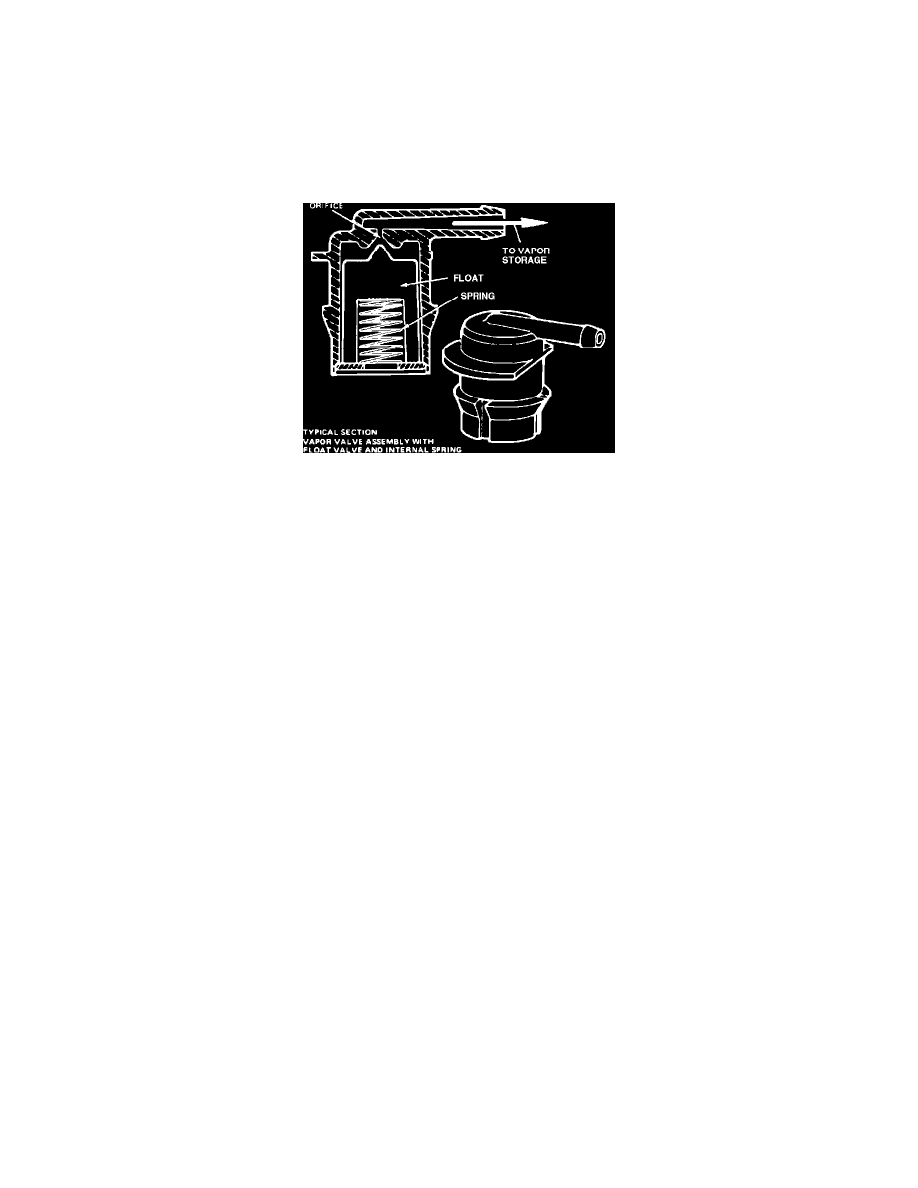Ranger 4WD V6-177 2.9L (1988)

FUEL TANK FILLER NECK
To prevent accidental filling with other than unleaded fuel, vehicles that require unleaded fuel have a special filler tube. This filler tube has a restriction
in it so that the only nozzles that can be inserted are the smaller diameter nozzles of pumps dispensing unleaded fuel.
It is recommended that the amount of fuel put in the tank when filling be limited to the automatic pump shutoff. Due to the expansion of fuel during
temperature increases, or overfilling ("topping off") can cause fuel overflow at the filler cap when the vehicle is standing or the cap is removed. If the
vehicle has two tanks, use fuel from both tanks after fill-up to reduce fuel levels.
Orifice Rollover Valve
ORIFICE/ROLLOVER VALVE ASSEMBLY
The orifice valve tends to meter the amount of fuel vapor passing out of the tank. The fuel vapors trapped in the sealed fuel tank are vented through the
orifice fuel tank vapor valve assembly. The vapors then leave the valve assembly through a single vapor line and continue to the carbon canister in the
engine compartment for storage, until they are purged to the engine.
SEALED FILL CAP
The sealed cap is a fill that incorporates is a built-in pressure-vacuum relief valve. Fuel system vacuum relief is provided after approximately .5 inch
vacuum is reached inside the tank. Pressure relief is provided when pressure inside the tank builds up approximately 1.8 psi. Under normal operating
conditions, the fill cap operates as a check valve preventing vapors from escaping the tank through the cap.
